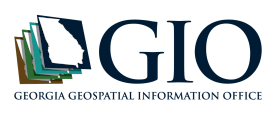How Would Imagery Benefit Me?
Transportation / Planning
Public Works
High resolution, accurate aerial imagery is valuable to Public Works Departments as a “backdrop” to utility information traditionally stored in CAD and GIS programs. Transmission and distribution utility poles can often be identified on imagery at this resolution by identifying the shadows cast by these structures. Manholes are also readily identified using this imagery where shadows, foliage or other obstructions do not impede the user’s ability to see the ground. In some cases, large electrical switchgear boxes, vaults and even fire hydrants may be visible in favorable conditions.
Forestry
The Google Imagery will significantly enhance State forestry professionals’ ability to quickly analyze timber stands throughout Georgia. The six-inch pixel resolution, three-band imagery is far superior to the USDA NAIP imagery (1m) which historically has been the standard aerial imagery base for professional forestry applications.
Tax Assessors (Change Detection)
The Google Imagery will provide a consistent, reliable base for tax assessors throughout the State of Georgia. This will provide a significant upgrade, especially in rural parts of our state, in which to build and maintain an effective tax parcel dataset. With a more up-to-date imagery base, changes to specific parcels can easily be identified as properties are improved and changed based on development. The six-inch pixel resolution is superior to utilizing the USDA NAIP imagery (1m) which has historically been used by rural local governments lacking the means to acquire higher resolution, custom flights.
Remote Sensing
The high resolution, three-band imagery is suitable for remote sensing applications such as Land Use / Land Cover (LU/LC) analysis. Traditionally, LU/LC analysis has been performed utilizing 1-meter imagery and 5-meter DEM data. The Google Imagery will offer a superior imagery base by which micro scale LU/LC analysis may be performed with a much higher degree of granularity and accuracy. In instances where the fourth band (Color InfraRed) imagery is desired, CIR imagery may be purchased through the Google Imagery Program for an additional fee. By the state already having the three-band imagery already available, this will greatly reduce the investment necessary to perform this type of remote sensing analysis.
LUCA: Census Operations
The imagery can be used in the address analysis for Local Update of Census Addresses (LUCA) Program. It can be added as a WMTS link to both GUPS/QGIS and ArcMap to act as a backdrop during the act of digitizing addresses for the LUCA program. This imagery allows users to see individual houses and streets, which is valuable in accurately placing map spots during the LUCA Update. The imagery purchased by Georgia was purchased in Summer 2017 (Google vintage 2014-2017 with most of Georgia being flown in early 2017) and may be newer and/or flown in better conditions (leaf off) than the imagery that the Census Bureau provides (USGS NAIP Plus). View NAIP Coverage here.
